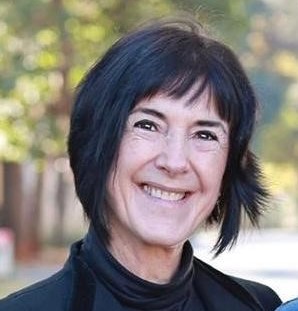click to dowload our latest edition
CLICK HERE TO SUBSCRIBE TO OUR NEWSLETTER


Published
9 months agoon
By
Linda MarkWhen Renee Pozniak told me in September 2005 that Mendel and Oren Kaplan were looking to send someone to the United Kingdom (UK) to bring Limmud to South Africa and she thought I would be interested, I had no idea what Limmud was.
Christmas is when Jews in the UK go to Limmud for a week and that year, it was to be held at the Nottingham University campus. I’ll never forget the thousands of Shabbos and Chanukah candles on that first night, and seeing the hundreds of women who lit them together to welcome Shabbat.
There were 3 000 Limmudniks at Nottingham that year, one of whom was a Chinese professor talking about the 13th century Jews of Kaifeng and the remains of the mikvah. Another was Deborah Lipstadt, historian, activist, and writer of History on Trial: My Day in Court with a Holocaust Denier. Those were heady days indeed.
On my return, the meetings began in earnest with David Bilchitz, Viv Anstey, and Oren Kaplan in Cape Town and thereafter, a small committee was formed.
There was a great deal of debate as to whether we should begin with a one-day Johannesburg Limmud or a weekend-destination conference. After some wisdom from former SA Jewish Report editor Geoff Sifrin, Women’s Day on 9 August was chosen. Our logo and branding were all in-house – in fact, everything was in-house. We had a tiny budget and absolutely no knowledge of whether we would have an audience.
The University of the Witwatersrand (Wits) Medical School was the concrete, grey, and unlovely venue we could afford, and the bleakness of the environment didn’t augur well for a day of cultural, spiritual, and intellectual upliftment. But oh, how the ugly edifice came alive with the nearly 400 participants and 54 speakers, nine of whom were international speakers!
Gila and Elliot Goldstein, the Limmud UK chairperson, were with us and in awe of what was achieved at our inaugural Limmud. There was a real demand, in fact, a thirst, for the freshness of the Jewish learning available. The diversity of presenters and session types and the breadth and quality of the programme engendered enthusiasm and excitement.
This week, more than 750 people have had the privilege of being blown away by Limmud 2023. One Limmudnik mentioned to me that every year, he has doubted that Limmud could maintain its freshness and relevance, but it always seems to defy his doubts.
The Indaba Conference Centre is an oasis marvellously suited to Limmud’s purposes, a far cry from the grey concrete architecture of Wits Medical School, reminiscent of post-war East Germany. Shabbos dinner and lunch chatting to new friends about talks enjoyed and planning and debating the hard choices of further selection, is central to the Limmud ethos. But now, Sunday braai on the grass at the lakeside, limitless snacks and refreshments at Bishops Court, salubrious accommodation, and delicious kosher food by Riva Flax elevate the cerebral experience. About 525 people were lucky enough to stay for the full Shabbat weekend, with a further 200-odd arriving on Sunday. The logistical nightmare was efficiently handled by Kim Nates.
What really stood out as a remarkable difference between 2007 and 2023 was the number of frum people who attended this weekend. Rabbi Cyril and Ann Harris and indeed, Rabbi Lord Jonathan Sacks were supporters of Limmud but in spite of this, in those early days, it was hard to overcome the prejudice and resistance to what was then assumed to be dangerously pluralistic.
Another difference is, of course, the broader executive and volunteer base. There were 117 speakers and more than 170 volunteers this year.
Yet another difference is the incredible facility offered at Young Limmud for parents to drop off their children, for whom there is an all-inclusive programme to inspire and entertain. We had a youth programme in 2007, but it was certainly in its infancy. Many parents are delighted to have the opportunity to participate in learning knowing that their children are so well taken care of.
I was struck by the cover of the Limmud programme booklet, which lists 13 of the ideals of Limmud and echoes those early 2006 discussions. “Unity in Diversity” is a fundamental principle, and Limmud 2023 has shown that the racial demographic is, at last, widening to be more representative of Jews who aren’t of Litvak origin. “Anyone a Teacher and Everyone a Student” are two other foundational principles that have been persistently upheld from then until now. Most importantly, the first statement reads: “Create the Things You Wish Existed”.
South African Limmud’s 16-year journey has become the incarnation of the dreams and thirst for learning of so many in our Jewish community, and the breadth and quality of the programme continues to enrich and inspire.
